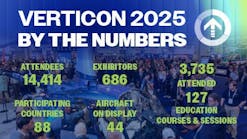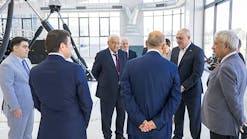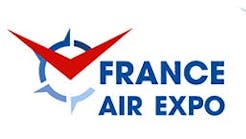In the month of May when we honor the memory of Charles Taylor and the other mechanics that have gone before us, it is important to take a look at our perception in the industry, and boost the image of the aircraft mechanic.
The first impression is the image and perception of who we are. Aviation technicians as a whole are not sensitive enough about their image or making a good impression. Listed below are some complaints we hear from aviation technicians below:
- No recognition or respect
- Low pay
- Double standards
- Pilots are bosses
- Not considered professionals
- Maintenance is a “necessary evil”
- Poor working conditions
As we look at the above complaints, we need to ask ourselves why we are treated this way? It is easy to blame someone else for our problems. The problem is with us. We may not like to hear that. Aviation technicians simply have a poor image and perception. In order to overcome the problems we encounter, we must change our image now. The worst thing we can do is not do anything about it and just complain. If all of us work hard to change our image at work, home, in public, or any time we have people contact, our image as an aviation technician will improve. Everyone can make a small impact in improving the aviation maintenance industry.
True skills and responsibilities
As we look at the aviation industry requirements, the aviation technicians’ skill level is so high and so demanding that there are almost no other professions that come close to it. The following are some examples of aviation technicians’ job requirements:
Responsibilities/job descriptions
- Responsible for safety of flight for passengers and crew
- Compliance to FAR & legal requirements
- Management of the entire maintenance program
Skill requirements
- Highly skilled in all technical areas including non-aviation personal tasks
- Required to understand legal and financial issues relating to aviation
- Required to perform many high-level business management tasks
Authorities and decision power
- Makes high dollar decisions everyday without pre-authorization
- Makes safety decisions that will affect passenger and crew safety
Why are aviation technicians treated second?
Aviation technicians are often times treated second regardless of the highly skilled requirements of aviation technicians. Of course, there are many people who look up to aviation technicians as highly skilled professionals with very interesting work. However, too many times this is not the case. So the question is why is it that way? Why are people still not respecting aviation maintenance? What is the general public view about aviation technicians?
The fact is, when aviation technicians are compared with pilots, it is very apparent that double standards take place in the industry. We cannot fault the pilots for these double standards because it is often generated by the false perception of aviation technicians from both the aviation industry and the general public. The information at the end of the article will illustrate some of the perceptions that aviation technicians are contending with.
Obviously, the realities of aviation technicians are not like the descriptions presented, but the perception is. You may be one of the few aviation technicians who look like a pilot and portray an image of professionalism, but many other fellow aviation technicians create negative impressions, impacting all of us. So we must unite as a group and portray our professionalism every way we can.
The importance of first impressions
Our mind works very quickly. It is amazing how fast it is working continuously. Because of the speed we can process information, we are always thinking, determining, reading nonverbal communication, and making decisions when we are meeting people. When we combine our fast mind along with human intuition, all of us have a great ability to read people very quickly and accurately. This is why first impressions are so important.
When we meet people for the first time, before we even speak, we are analyzing them immediately. We observe how they look, what they wear, hairstyle, color, height, weight, and all items we can see. Also we look for their facial expressions, body movements, hand motions, and again, all the things we can see. At this point, we probably made our decision about them. Please keep in mind that this takes a matter of a split second. When they speak, we listen to their tone, expression during speaking, accent, and language they use.
The actual content of the conversation may not be as important as nonverbal communication.
There is an old saying that you “never get a second chance to make a good impression.” And it is true. Think about your first encounters with local businesses or people when you first moved to a new town. How did you choose your bank, cleaners, grocery, clothing, and department stores? Were your decisions made, in large part, because of the first impression you got when you first walked through the door? Were the appearances of people and how they presented themselves to you a big factor to making your decisions?
When you encounter a bad experience, do you give them a second chance?
Enthusiastic nonverbal communication
The body language consists of about 55 percent of decision factor.
This means the majority of people are looking at body movements consciously and unconsciously. Body language is anything we do that either detracts from or enhances what we are saying. Our smile, posture, dress, and gestures are all examples of nonverbal communication. They can work for us or against us.
People are looking at body movements consciously and unconsciously.
For example, if an aviation technician dresses professionally with white shirts and clean slacks, people will be more apt to think of him/her and treat him/her as a professional. If you slouch or are not groomed, people will interpret it as a lack of self-confidence and presume you are not knowledgeable about the aircraft system, even though you may know it inside out. Think about nonverbal clues you give. Always evaluate your nonverbal messages carefully and make sure you are projecting the image you want to portray.
Pilot
- Starched shirt and uniform
- Four gold bars with wing logo
- Clean shaved face
- Gray hair and distinguished look
- College educated look and attitude
Aircraft Technician
- Messy uniform with nametag
- No gold bars or wing logo
- Half shaved face
- Gray hair but just looks older
- High school educated look and attitude
J.D. McHenry, president of Global Jet Services, has been involved in numerous aviation maintenance and flight operation programs for more than 31 years. His background includes aircraft manufacturer, corporate flight operations, FAR 91 and 135 operations, aircraft management, repair stations, and fixed base operations. He holds A&P, IA, and Doctorate of Business Management. For more information on Global Jet Services, visit www.globaljetservices.com.




